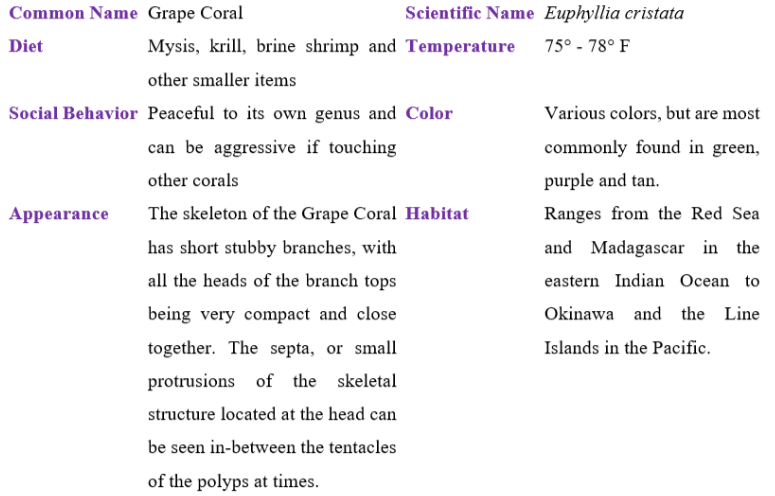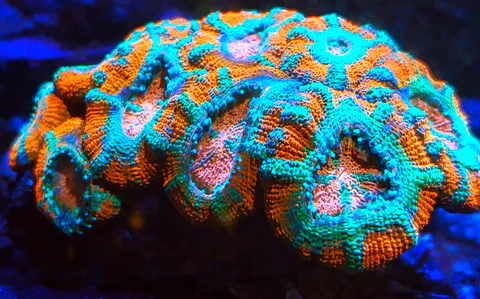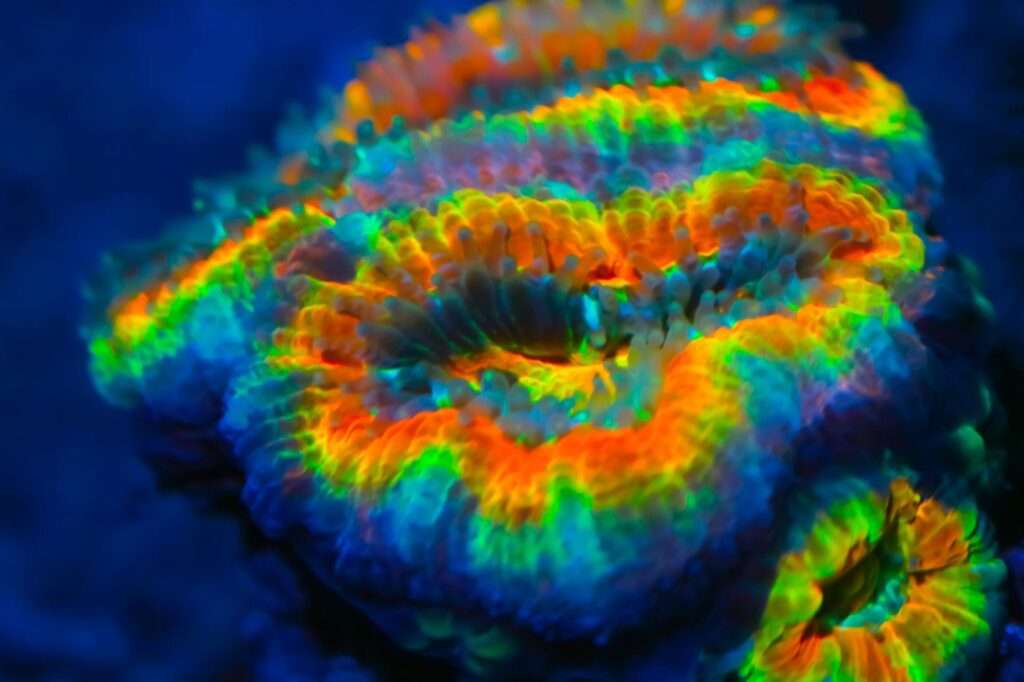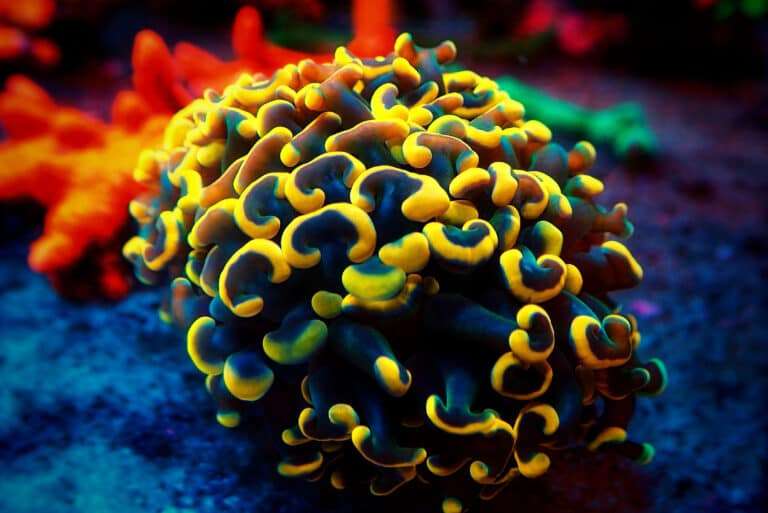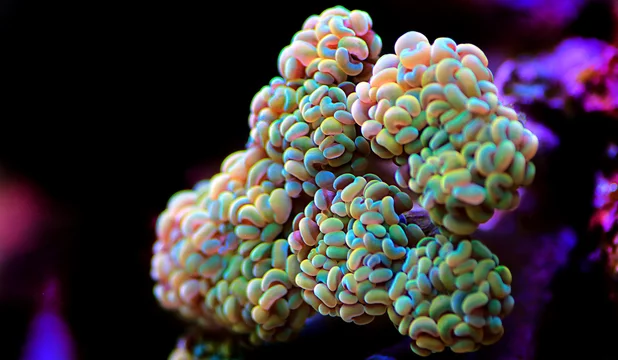
The Frogspawn Coral (Euphyllia divisa) is related to the Grape Coral (Euphyllia cristata). But unlike frogspawn, its tentacles resemble shorter versions of the tentacles on torch coral Euphyllia glabrescens. You can instantly recognise this coral by taking a close look. The Grape coral lacks branching polyps, and each of its completely straight tentacles has a distinctive tip.
The E. cristata’s individual tentacles range in color from green to brownish green. If you can find them, they make for a fun “collectable” due to the range of colors they come in. Although they are not as common as other Euphyllia, they are still worth looking for because, once in the aquarium, they are sure to draw attention.
Habitat
Chevalier first described the Grape Coral, Euphyllia cristata, in 1971. In the Indo-West Pacific, the Philippines, New Caledonia, and areas of Australia, such as the Great Barrier Reef and the Dampier Archipelago, are home to E. cristata. The depths of the E. cristata are 98 feet (30 m), which is shallower than the depths of other Euphyllia species. In mild, murky waters, they establish tiny colonies and thrive in indirect, bright light. Additionally, they have stinging cells that they use to defend themselves from predators and to assist them catch small prey.
Morphology
The Grape Coral E. cristata has a skeleton made up of short, stubby branches with very compact and close-spaced branch heads. At times, the polyps’ septa, or tiny protrusions of the skeletal structure at the head, can be seen in-between their tentacles. Only partially throughout the night do the polyps extend.
Polyps on E. cristata have the capacity to fully retract into the skeleton and establish colonies. The length of each tentacle can increase by two to three times when the animal is feeding. Certain colonies can grow to 1.5 feet (46 cm). Unknown life expectancy.
In Captivity
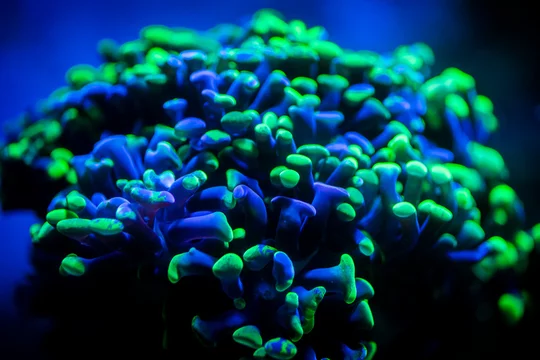
- Feeding
Euphyllia corals have evolved a number of feeding techniques. Many of its nutrients are obtained through a symbiotic interaction with a sea algae called zooxanthellae. They can also take in dissolved organic substances and planktonic creatures as well as food particles from the water column. Surprisingly, these corals can also consume significantly bigger portions of food. Feed the coral the whole organism by chopping or dicing up whole fish or shrimp. Because different animal parts have varied nutritional characteristics, feeding your Euphyllia in this manner will provide positive effects. Since these corals are constantly hungry, feeding them as needed with a variety of meals is beneficial.
- Social Interactions and Compatibility
Euphyllia corals should be placed far from any other corals since they might be aggressive if they come in contact with them. The Grape Coral is kind to members of its own genus but aggressive toward members of other genera in its family.
Table
